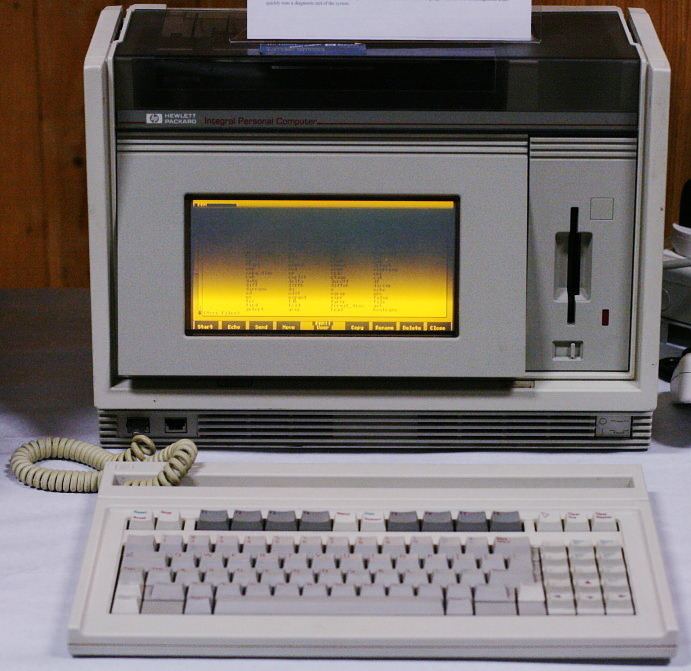 | ||
The HP Integral PC (or HP 9807A) was a portable UNIX workstation computer system produced by Hewlett-Packard, launched in 1985. It was based on the Motorola 68000 microprocessor (running at 8 MHz) and ran early version of the HP-UX operating system.
Contents
Hardware
The Integral PC was a mains-powered portable computer with a 9-inch amber electroluminescent display with a resolution of 512×255 pixels or 80×28 characters. It also incorporated a 710 kB 3.5" floppy disk drive and an HP ThinkJet ink-jet printer. Standard memory capacity was 256 kB ROM plus 512 kB RAM, expandable to 1.5 MB. Expansion slots and an HP-IB bus were also included. The mechanical design was based on the ideas of the de facto standard HP-85.
The concept of an upright portable computer system with integrated printer, floppy and screen was followed up by several companies until this century.
Within the Integral PC CPU, RAM, ROM, memory management, I/O buffering, system timing and keyboard interface are integrated on a single logic-board. All peripheral units and the 14 connections are build using independent boards. Each board with a size smaller than a piece paper with letter size. To make it easier to check the boards, each board contains an own timer. The I/O-board (with two connections for optional addons) the keyboard-interface, the "Human Interface Link" HP-HIL and the powersupply can be checked and tested independently.
The graphics processor of the Integral PC (GPU) was custom made, able to drive an electroluminescence display or nearly every kind of monitor. The processor provides a graphical subsystem simple to use to drive a bitmapped display. The GPU was able to draw lines, rectangles and alphanumerical characters by hardware. Additionally it provides a hardware cursor and the display-RAM-interface.
The electroluminescence-display was based on thin-film-technique developed by HP and other companies.
Software
The Integral PC was unusual in that the HP-UX operating system kernel resided in the ROM, which also included the HP Windows graphical user interface and the Personal Applications Manager (PAM). HP-UX commands and utilities were supplied separately on floppy disk. There was an add on ROM that provides HP-BASIC. Using the ROM, the integral PC was ready to run BASIC simply by switching on the system.
